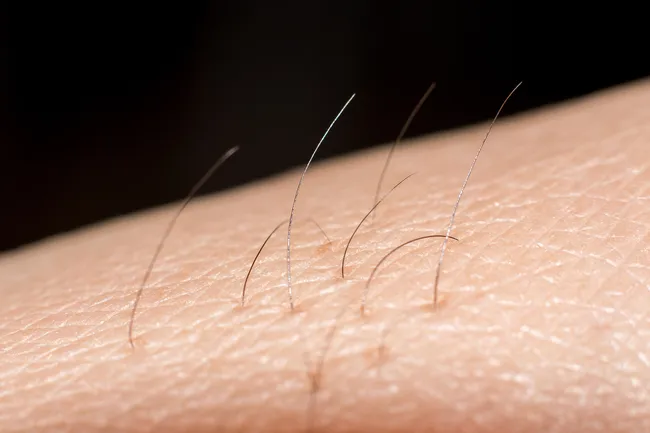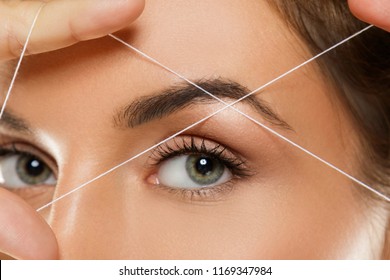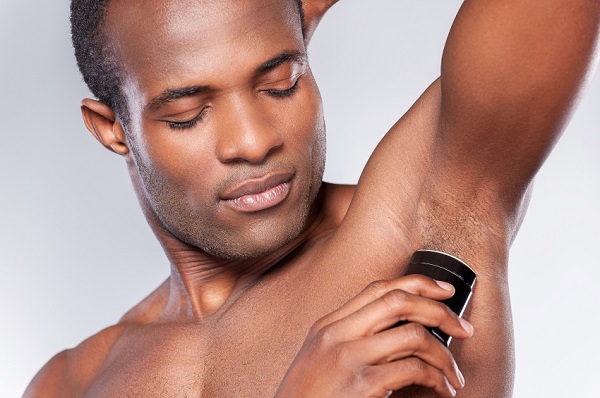BEAUTY
Healthy Beauty
Best Ways to Remove Hair
Hair Today, Gone Tomorrow
Some 30% of women’s and 90% of men’s bodies are covered with terminal hair. That’s the thicker type on your head, eyebrows, chest, back, pubic area, underarms, and so on. (The peach-fuzz kind is called vellus hair). But it seems most people want at least some of it gone. The good news is that as technology improves and techniques spread all over the world, hair removal options abound.

Plucking
Safe and cheap as a pair of tweezers, this method is fine to shape brows or pluck a random hair here and there. Plus, it lasts a while -- the hairs can take up to a couple of months to grow back. But reserve tweezing for the smallest jobs. Too much plucking can cause scarring or ingrown hairs. Higher-tech tweezer epilators, which use electric current, get rid of more hairs faster. But with the speed comes less precision.
Threading

Waxing

Laser Hair Removal

This high-tech method uses light beams to vaporize hair and destroy hair follicles. It’s not a forever treatment, but over time the hair that grows back will usually be thinner and finer. Laser hair removal can be pricey, though. And it takes at least 6 or 7 sessions -- with weeks between each -- to get lasting results. You’ll need to see your dermatologist for maintenance anywhere from once or twice a year to every few years.
Benefits of Laser Hair Removal
Lasers are useful for removing unwanted hair from the face, leg, chin, back, arm, underarm, bikini line, and other areas.
Benefits of laser hair removal include:
Precision. Lasers can selectively target dark, coarse hairs while leaving the surrounding skin undamaged.
Speed. Each pulse of the laser takes a fraction of a second and can treat many hairs at the same time. The laser can treat an area approximately the size of a quarter every second. Small areas such as the upper lip can be treated in less than a minute, and large areas, such as the back or legs, may take up to an hour.
Predictability. Most patients have permanent hair loss after an average of three to seven sessions.
How to Prepare for Laser Hair Removal
Laser hair removal is more than just ''zapping'' unwanted hair. It is a medical procedure that requires training to perform and carries potential risks. Before getting laser hair removal, you should thoroughly check the credentials of the doctor or technician performing the procedure.
If you are planning on undergoing laser hair removal, you should limit plucking, waxing, and electrolysis for six weeks before treatment. That's because the laser targets the hairs' roots, which are temporarily removed by waxing or plucking.
You should also avoid sun exposure for six weeks before and after treatment. Sun exposure makes laser hair removal less effective and makes complications after treatment more likely.
What to Expect During Laser Hair Removal
Just before the procedure, your hair that will be undergoing treatment will be trimmed to a few millimeters above the skin surface. Usually topical numbing medicine is applied 20- 30 minutes before the laser procedure, to help with the sting of the laser pulses.The laser equipment will be adjusted according to the color, thickness, and location of your hair being treated as well as your skin color.
Electrolysis

Shaving

Shaving Bumps

Depilatories


Anti-Cellulite Lotion
Lotion is a moisturizer that can hydrate your skin. This can make it look smoother. An anti-cellulite product with caffeine may tighten the surface of your skin for a little while. This can make your cellulite harder to see, but it doesn’t get rid of it. Lotion can’t get deep enough under your skin to break up your fat.
Try this instead: Talk to your dermatologist. There are treatments that can make your cellulite less noticeable.
Face Mist

You may feel refreshed when you add a bit of rose water mist to your morning routine. But spraying your face with droplets isn’t the best way to moisturize your skin. And if you have sensitive skin, a mist with fragrance may irritate it.
Try this instead: Put a layer of moisturizer on your damp skin. If you’re prone to acne, use oil-free products. They’re less likely to clog your pores.
Activated Charcoal Masks

Activated charcoal can absorb poisons or drugs in your stomach. But research is limited on how charcoal can help your skin. Some products, like face peels, may even have harmful ingredients. Always test a small patch of your body first.
Try this instead: You can get rid of dirt and bacteria by simply washing your face with water and a gentle cleanser.
Things That Promise Quick, Big Fixes

It can take a while to see a difference in your skin. Acne medicine may take 4 weeks or longer to work. Retinoids can improve fine lines, wrinkles, and the appearance of age spots. But you may not see results for 6 months.
Try this instead: Talk to your dermatologist about options other than surgery. You can try laser treatment, intense pulsed light therapy, or other resurfacing options.
Eye Cream

Ones with vitamin C or hydroquinone can lighten pigment under your eyes. (Use hydroquinone or bleaching agents only if your doctor says so.) But this won’t ease dark circles from visible blood vessels. The skin under your eyes is thin. You may notice more of a blueish tint as you age. It can also happen if you have allergies or you’re dehydrated.
Try this instead: Drink water and treat allergies. Talk to your dermatologist for more help.
Natural Oils for Acne

Cocoa butter, shea butter, and coconut oil can be good moisturizers. But they are oil-based, which means you may not want to use them on your face. They can clog your pores. If you dab oil on your pimples, they may get worse.
Try this instead: You can treat your zits with benzoyl peroxide or salicylic acid. If your acne is more severe, talk to your dermatologist about retinoids, antibiotics, and hormone therapy.
Facial Massage
You may feel relaxed after a facial massage. But it probably won’t improve your skin for long. You may want to avoid facials if you have acne. If the person doing your facial squeezes your blackheads or pimples, you could get discoloration that can last for months.
Try this instead: Lower your expectations. You can still get a facial. Just don’t expect lasting change. And use a moisturizer daily.
Face Scrubs

Your face sheds dead cells on its own. If you exfoliate every day, you can strip away layers of natural moisture. That can make your skin dry. Harsh scrubs can also irritate your skin, especially if it’s sensitive or you have acne.
Try this instead: Use your fingers to apply a cleanser free of fragrance, oil, and alcohol. Wash your face with lukewarm water and pat dry. Put a moisturizer on while your skin is still damp.
Creams For Old Stretch Marks

Stretch marks can form when your skin stretches and shrinks quickly. You may get them when you’re pregnant or when you grow. If your stretch marks are old, a cream, oil, or gel isn’t likely to get rid of them. That’s because they’re a kind of permanent scar.
Try this instead: For best results, talk to a dermatologist about your stretch marks when you first notice them. Laser therapy may help.
Apple Cider Vinegar to Remove Moles

Apple cider vinegar is acidic. If you use it to remove a mole, it can damage your skin and may burn or scar you. It may not be good for eczema, either. A small study showed that sitting in a diluted bath of apple cider vinegar could irritate your skin if you have eczema.
Try this instead: If you want a mole removed, see a dermatologist. If you have eczema, see your doctor. They have several options that can treat it.
Keep It Simple

For healthy skin:
- Eat a balanced diet.
- Drink water.
- Don’t smoke.
- Use a broad-spectrum sunscreen with SPF 30 daily (not just when it’s sunny).
- Use a moisturizer every day.
You don’t have to spend a lot of money to keep your skin hydrated. Petroleum jelly and drugstore brands work just as well as the expensive stuff. If you have sensitive skin, look for a product with as few ingredients as possible.